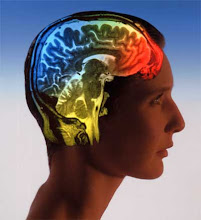Monday, 21 March 2011
This blog is for...
RI final drafts
Title page
Page numbers (on Word, click 'Insert' tab and then you see the option for page numbers)
Abstract should contain: aim, background, hypothesis/variables, method & design, sample (who & how many), procedure, results & conclusion.
Aim/rationale: should clarify both aim and link between background research and the current study (2 marks)
Design should mention conditions of the IV (for experiments only)
Materials - all paper materials should be included in appendices
Procedure - should include ethical procedures
Results - Raw data & calculations in an appendix
Graphs and tables labelled e.g. 'Table 1' and referred to in text.
Discussion - Findings stated and explained in terms of variables studied.
Discussion - problems and solutions identified
Discussion - Future research ideas and/or real-world implications
Short conclusion section with main finding and conclusion
Refs in alphabetical order by researcher surnames
Appendices complete
Throughout, avoid use of 'I', 'We', 'Our' etc.
These apparently small things could add up to losing a quarter of the available marks! Well done on your efforts, it is well worthwhile getting these as good as possible.
Monday, 24 January 2011
Prejudice
I think that essays along the lines of 'Explain the nature of prejudice' are among the most difficult to answer in the Higher Psychology exam. That doesn't mean that you should do badly in them - just that a bit more planning may be necessary.
The reason they are hard, is that psychological concepts - in this case prejudice, stereotyping, discrimination etc - can be difficult to define, and even experts in the field don't often agree. It should be easier to describe and evaluate a theory.
On a positive note, the Higher exam now provides some guidance to help you structure an answer. This could read as follows (source - the 2010 question paper):
- A definition of prejudice, with examples
- Cogntive, affective and behavioural aspects of prejudice
- Evaluation of research evidence on the nature of prejudice.
These are things that you are told that you "may include" suggesting that there are other equally good ways of answering the question. That might be true in principle, but you can be sure of two things:
Nearly everyone will use the structure suggested in the exam paper
and
The marking instructions will link strongly to these bullet points.
It's therefore by far the safest option to stick to the suggested headings, thinking of your essay as having three sub-sections. Here are some things to include.
- You should have a definition of prejudice ready from your revision (make sure you can define all key concepts in the Higher!) In this section, also define and explain stereotyping and discrimination, and try to make clear the difference between these three processes. Any examples can be used, but ones from your coursework which are linked in to a research or historical context are more likely to gain valuable A&E marks.
- Here you work through the three aspects of prejudice as an attitude - cognitive (thoughts), affective (feelings) and behavioural (actions). Make sure that they are fully explained, and you are making clear the differences between the three. You can use examples again, but keep them brief. Mentioning supporting research should pick up extra marks.
- Here, you should describe and evaluate your key research evidence. I suggest a detailed dicsussion of one study, plus mentioning 2-3 others more briefly. Avoid studies which very clearly link to the other two aspects of the prejudice topic (e.g. Adorno, 1950). A good choice for this question would be the Cohen (1981) study of stereotypes, or LaPiere's (1934) study of attitudes v's actions. Sherif et al (1954) could also be used.
Overall, make sure your essay is long and detailed enough to pick up the 20 marks, and ensure that you have encluded enough evaluation points, especially in that third bullet point. Supporting research studies and/or examples in the first two can also pick up A&E marks.
Wednesday, 10 November 2010
Thursday, 21 October 2010
Friday, 17 September 2010
Tulving
Tulving website
The site & short video clip mostly talks about the difference between encoding and retrieval. Tulving is also known as one of the researchers who distinguished between episodic and semantic LTM (Tulving, 1972).
You may remember the study by Craik and Tulving (1975) which shows that a word (e.g. 'pig') is better encoded to LTM if you ask a meaningful question about it (e.g. is it a kind of animal?) rather than focussing on sound or appearance (e.g. does it rhyme with 'fig'?).
He also developed the encoding specificity principle, which states that cues to memory need to have some connection to the context in which something is learned. Recognition is usually easier than free recall, but can be harder when things are out of context (e.g. seeing your neighbour at a nightclub in Ibiza).
Thursday, 16 September 2010
Poggendorff Illusion


